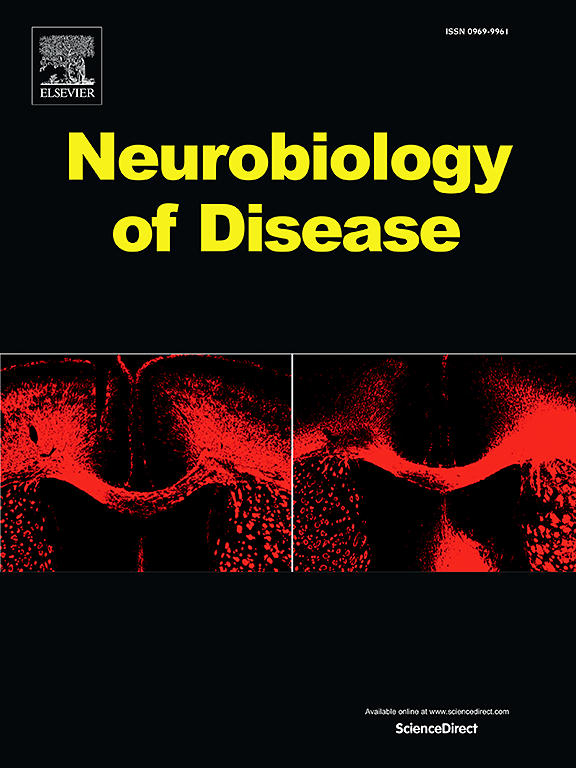神经张力障碍模型中,白斑深部脑刺激后运动回路突触可塑性和尖峰模式的全网络调节。
IF 5.6
2区 医学
Q1 NEUROSCIENCES
引用次数: 0
摘要
目的:研究长期深部脑刺激(dpi)对广泛性肌张力障碍动物模型(dtsz仓鼠)丘脑运动神经元和皮质运动神经元突触活动的功能网络效应,重点了解GPi-DBS调节神经活动的潜在机制。方法:对dtsz仓鼠经dbs和假dtsz处理后的丘脑运动神经元和皮质运动神经元进行全细胞记录。自发突触活动的药理学特征和分析通过检查峰间间隔(ISI),突触后电流(PSC)频率,自发和诱发动作电位放电率。振荡模式也被评估以评估皮质-丘脑-皮层回路的潜在改变。结果:结果显示长期GPi-DBS后突触活动有明显改变。与假药治疗的动物相比,dbs治疗的动物表现出ISI减少和PSC频率增加,丘脑的兴奋性输入增加,皮层M1的兴奋性输入更聚集(尽管不是更频繁)。在丘脑和运动皮层神经元中均观察到快速振荡,提示皮质-丘脑-皮层回路的调节。虽然自发和诱发动作电位的总体放电率保持不变,但突触可塑性发生了变化,包括PSC振幅增加和抑制性突触电流的变化。结论和主要发现:GPi-DBS通过干扰非同步神经活动调节运动网络内的突触可塑性。突触前和突触后机制的改变,包括抑制性突触电流和轴突活动的改变,导致神经元放电模式和突触连通性的重组。这些网络范围的调节可能支持GPi-DBS对全身性肌张力障碍的治疗效果。本文章由计算机程序翻译,如有差异,请以英文原文为准。
Network-wide modulation of synaptic plasticity and spike patterns in motor circuits after pallidal deep brain stimulation in a dystonia model
Aims
We aimed to investigate the functional network effects of long-term deep brain stimulation (DBS) of the globus pallidus pars interna (GPi) on synaptic activity in motor thalamic and motor cortical neurons in an animal model of generalised dystonia (dtsz hamster) with a focus on understanding the underlying mechanisms of GPi-DBS in modulating neural activity.
Methods
Whole-cell recordings were performed on motor thalamic and motor cortical neurons from DBS-treated and sham-treated dtsz hamsters. Spontaneous synaptic activity was pharmacologically characterised and analysed by examining interspike intervals (ISI), postsynaptic current (PSC) frequencies, and discharge rates of spontaneous and evoked action potentials. Oscillatory patterns were also assessed to evaluate potential alterations in cortico-thalamo-cortical loops.
Results
The results revealed significant alterations in synaptic activity following long-term GPi-DBS. DBS-treated animals exhibited reduced ISI and increased PSC frequencies compared to sham-treated animals, with increased excitatory input to thalamic and a more clustered (though not more frequent) excitatory input to cortical M1. Fast oscillations were observed in both thalamic and motor cortical neurons, suggesting modulation of cortico-thalamo-cortical loops. While overall discharge rates of spontaneous and evoked action potentials remained unchanged, alterations in synaptic plasticity were noted, including increased PSC amplitudes and changes in inhibitory synaptic currents.
Conclusion and main finding
GPi-DBS modulates synaptic plasticity within the motor network by disrupting desynchronised neural activity. The alterations in pre- and postsynaptic mechanisms, including changes in inhibitory synaptic currents and axonal activity, lead to reorganising neuronal firing patterns and synaptic connectivity. These network-wide modulations may underpin the therapeutic effects of GPi-DBS in generalised dystonia.
求助全文
通过发布文献求助,成功后即可免费获取论文全文。
去求助
来源期刊

Neurobiology of Disease
医学-神经科学
CiteScore
11.20
自引率
3.30%
发文量
270
审稿时长
76 days
期刊介绍:
Neurobiology of Disease is a major international journal at the interface between basic and clinical neuroscience. The journal provides a forum for the publication of top quality research papers on: molecular and cellular definitions of disease mechanisms, the neural systems and underpinning behavioral disorders, the genetics of inherited neurological and psychiatric diseases, nervous system aging, and findings relevant to the development of new therapies.
 求助内容:
求助内容: 应助结果提醒方式:
应助结果提醒方式:


